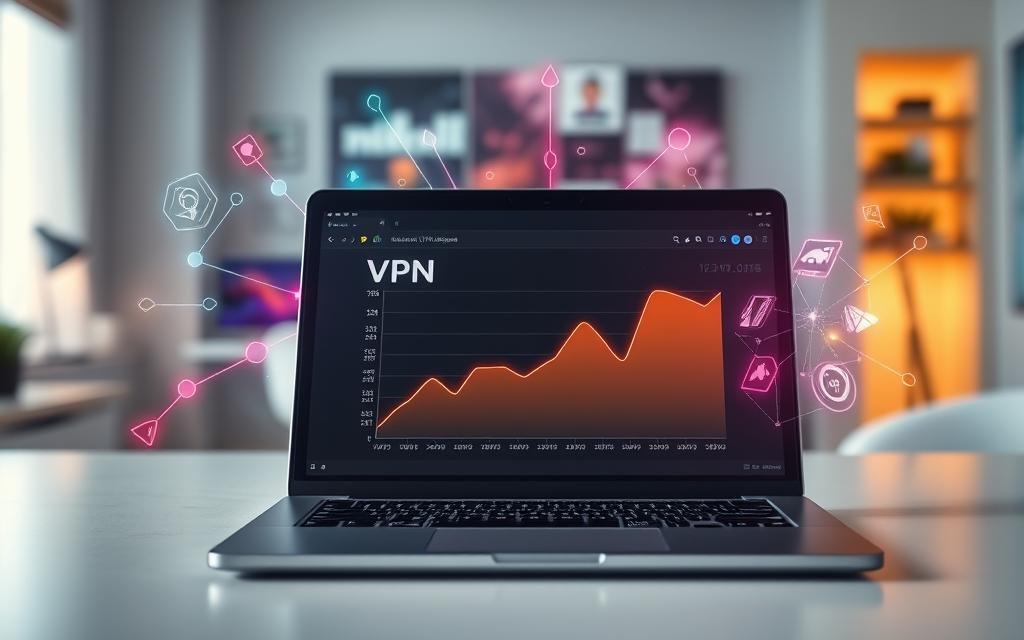What is a Zero-Day Exploit? Key Facts for Cybersecurity Awareness
In the ever-evolving world of cybersecurity, threats are constantly emerging, and one of the most dangerous is the zero-day exploit. This term refers to a vulnerability in software or hardware that is exploited by hackers before the developer has had a chance to address it. The name “zero-day” comes from the fact that the vulnerability is unknown to the public, leaving zero days for the developer to create a fix. Understanding what a zero-day exploit is, how it works, and its implications is crucial for anyone aiming to protect digital assets in an increasingly connected world. This article will explore the key facts about zero-day exploits, their real-world impacts, and strategies to mitigate their risks, ensuring a comprehensive guide for cybersecurity awareness.
Table of Contents
Toggle—
### H2: Definition and Overview
What is a zero-day exploit? At its core, a zero-day exploit is a security vulnerability that is discovered and exploited by attackers before the software or hardware vendor has released a patch to fix it. This type of attack is particularly dangerous because the target has no prior knowledge of the flaw, making it difficult to defend against. Zero-day exploits can affect anything from operating systems to web applications, and they often serve as the entry point for more sophisticated cyberattacks.
The Significance of Zero-Day Exploits Zero-day exploits are significant because they highlight the criticality of proactive security measures. Since the vulnerability is unknown, it creates a window of opportunity for attackers to infiltrate systems without detection. This window can be as short as a few hours or as long as several months, depending on how quickly the flaw is identified. The potential for high-impact attacks makes zero-day exploits a top priority for cybersecurity professionals and organizations.
Origins of the Term The term “zero-day” originated in the cybersecurity industry during the early 2000s. It was coined to describe the period between the discovery of a vulnerability and the release of a patch. The zero-day window is the most vulnerable time for systems because no defenses are in place to counteract the exploit. This concept has since become a standard in security discussions, emphasizing the need for constant vigilance and rapid response mechanisms.
—
### H2: How Zero-Day Exploits Work
Understanding the Exploitation Lifecycle A zero-day exploit follows a specific lifecycle that begins with the discovery of a vulnerability. This process often involves reverse engineering, code analysis, or penetration testing. Once the flaw is identified, attackers can craft a malicious payload to exploit it. The key stages include: 1) Vulnerability discovery, 2) Exploit development, 3) Attack execution, and 4) Exploitation. Each of these steps is critical to the success of a zero-day attack.
Stages of a Zero-Day Attack 1. Discovery: Attackers find a previously unknown weakness in a system, often through intensive research or hacking attempts. 2. Exploit Development: They then create a specific tool or code to leverage the vulnerability. This phase requires technical expertise and can take days or weeks. 3. Attack Execution: The exploit is deployed in the wild, targeting systems or networks. This is where the element of surprise plays a major role. 4. Exploitation: Attackers gain unauthorized access to data, systems, or services, often without triggering alerts.
The Role of Attack Vectors Zero-day exploits can be delivered through various attack vectors, including malware, phishing emails, or compromised websites. For example, an attacker might inject a malicious script into a trusted website, which then exploits a zero-day flaw in the browser. This method allows hackers to reach a large audience quickly, increasing the likelihood of a successful breach.
—
### H2: Real-World Examples
Historical Case Studies Zero-day exploits have been used in notable cyberattacks that have shaped the cybersecurity landscape. One of the most famous examples is the Stuxnet worm, which targeted Iran’s nuclear facilities in 2010. This attack exploited zero-day vulnerabilities in Windows systems, demonstrating the power of such exploits in both state-sponsored and corporate contexts.
1. Stuxnet (2010) The Stuxnet worm is a prime example of a zero-day exploit in action. It targeted specific industrial control systems and exploited two zero-day vulnerabilities in the Windows operating system to sabotage Iran’s nuclear program. The attack went undetected for months, showcasing the effectiveness of zero-day exploits in achieving strategic objectives. – Impact: Stuxnet caused physical damage to centrifuges, highlighting the real-world consequences of digital vulnerabilities. – Discovery: The exploit was later revealed by security researchers, leading to a patch release and increased awareness of zero-day threats.
2. Flame (2012) Another significant example is the Flame malware, which was discovered in 2012 and targeted government and corporate networks in the Middle East. Flame exploited multiple zero-day vulnerabilities in Windows and other software, allowing attackers to steal sensitive data and monitor communications. This attack underscored the use of zero-day exploits in espionage and the need for continuous security monitoring.
3. Sony Pictures Hack (2014) In 2014, the Sony Pictures hack utilized a zero-day exploit to breach the company’s network. The attack, attributed to North Korea, leveraged a vulnerability in Oracle Java to steal data and disrupt operations. This incident demonstrated the scale of damage that a single zero-day exploit can cause.
The Role of Public vs. Private Disclosure Zero-day exploits can be disclosed publicly or kept secret for sale to the highest bidder. For instance, the Bash bug (2014) was a zero-day vulnerability in the Unix-based operating systems, which was discovered and used by hacktivists before being patched. In contrast, private zero-day exploits are often sold to governments or corporations for targeted surveillance or cyber warfare.
—
### H2: Impacts on Cybersecurity
Threat to Individuals and Organizations Zero-day exploits pose a serious risk to both individuals and organizations. For individuals, they can lead to data breaches, identity theft, or financial loss. For organizations, the impact is even more significant, as zero-day attacks can compromise critical infrastructure, customer data, or intellectual property. The lack of prior knowledge about the vulnerability means that defenses are unprepared, allowing attackers to penetrate systems with ease.
1. Financial Losses Zero-day exploits can result in substantial financial losses for businesses. For example, the Target data breach (2013) exploited a zero-day flaw in their payment system, leading to the theft of 40 million credit card records. The cost of this breach included reputation damage, legal fees, and operational disruptions. – Statistical Insight: According to the IBM Cost of a Data Breach Report (2023), breaches involving zero-day exploits cost organizations $3.6 million on average, significantly higher than those with known vulnerabilities.
2. Operational Disruptions In addition to financial costs, zero-day attacks can cause operational disruptions. The WannaCry ransomware attack (2017) exploited a zero-day vulnerability in Microsoft Windows, affecting over 200,000 computers in 150 countries. This attack disrupted hospitals, banks, and government agencies, highlighting the systemic impact of such exploits.
National Security and Critical Infrastructure Zero-day exploits are not limited to corporate environments; they also play a crucial role in national security. Governments and military organizations often buy zero-day exploits to conduct cyber espionage or targeted attacks. For instance, the Equifax data breach (2017) exploited a zero-day flaw in Apache Struts, compromising 147 million consumer records. This incident emphasized the vulnerability of even well-established institutions to zero-day threats.
—
### H2: The Role of Vulnerability Disclosure
Public vs. Private Disclosure The vulnerability disclosure process is a key aspect of zero-day exploits. When a vulnerability is discovered, it can be publicly disclosed to inform users and developers, or privately sold to organizations for monetary gain. Public disclosure allows for rapid patching, while private disclosure can lead to targeted attacks with limited exposure.
1. Responsible Disclosure Responsible disclosure involves reporting the vulnerability to the vendor before it is made public. This approach gives the vendor time to develop a patch and notify users. For example, the Heartbleed bug (2014) was responsible disclosed, allowing OpenSSL to address the flaw before it was exploited on a large scale. – Benefits: Responsible disclosure minimizes damage and ensures timely fixes, protecting users from potential breaches.
2. Zero-Day Markets In contrast, zero-day markets are black markets where vulnerabilities are bought and sold. Attackers or hackers can sell zero-day exploits to governments, corporations, or cybercriminals for thousands or even millions of dollars. This market drives innovation in exploit development but also increases the risk of widespread attacks.

The Ethical Debate The practice of selling zero-day exploits has sparked ethical debates within the cybersecurity community. Critics argue that keeping vulnerabilities secret compromises public safety, as attackers can use them to launch devastating attacks. Proponents, however, highlight the value of private use in scenarios like national defense or covert operations.
—
### H2: Prevention and Mitigation Strategies
Early Detection and Monitoring Preventing zero-day exploits requires early detection and constant monitoring of systems. Security teams can use intrusion detection systems (IDS) and security information and event management (SIEM) tools to identify unusual activity. Additionally, regular security audits and penetration testing help uncover potential weaknesses before they are exploited.
1. Patch Management While zero-day exploits are unknown at the time of attack, patch management is a critical strategy for mitigating future risks. Once a zero-day vulnerability is disclosed, organizations can implement patches to secure their systems. However, patching must be done quickly to prevent exploitation. – Best Practices: Prioritize critical patches, use automated tools, and test patches before deployment.
2. Multi-Layered Defense A multi-layered defense strategy is essential for protecting against zero-day attacks. This includes firewalls, antivirus software, endpoint protection, and application whitelisting. By combining multiple security measures, organizations reduce the likelihood of a successful exploit.
The Importance of Cybersecurity Hygiene Good cybersecurity hygiene is another key defense against zero-day exploits. This includes regular software updates, strong password policies, data encryption, and user education. For instance, email phishing is a common vector for zero-day exploits, so training employees to recognize suspicious emails can significantly reduce the risk of initial infection.
—
### H2: Future of Zero-Day Exploits
Emerging Trends in Zero-Day Attacks As technology advances, zero-day exploits are becoming more sophisticated and harder to detect. The growth of the Internet of Things (IoT) has introduced new attack surfaces, with zero-day vulnerabilities in smart devices becoming a rising concern. Additionally, the increasing use of AI in exploit development means that attackers can create more targeted and efficient threats.
1. AI-Driven Exploits Artificial intelligence is now being used to automate the discovery and exploitation of zero-day flaws. AI tools can analyze vast amounts of data to identify patterns that indicate vulnerabilities. This accelerates the exploitation process and allows attackers to target specific systems with greater precision. – Impact: AI-driven exploits can reduce the time to attack, making it challenging for organizations to respond in time.
2. Zero-Day Exploits in Emerging Technologies The adoption of new technologies like quantum computing and blockchain has introduced new zero-day vulnerabilities. For example, quantum algorithms may break current encryption methods, creating security gaps that could be exploited. Similarly, blockchain vulnerabilities are being studied for potential attacks on decentralized systems.
The Need for Collaboration To stay ahead of zero-day threats, collaboration between developers, security researchers, and organizations is vital. Sharing vulnerability information through platforms like CVE (Common Vulnerabilities and Exposures) helps accelerate patching and improve overall security. Additionally, public-private partnerships can enhance threat intelligence and response capabilities.
—
### H2: Key Facts for Cybersecurity Awareness
The Anatomy of a Zero-Day Exploit 1. Unknown Vulnerability: The exploit targets a flaw that has not been disclosed publicly. 2. Time Sensitivity: The attack occurs within zero days of the vulnerability being discovered, making it time-critical. 3. High Impact: Zero-day exploits can lead to systemic breaches and catastrophic consequences. 4. Rapid Response Required: Once a zero-day exploit is identified, patching must be swift to prevent further damage. 5. Diverse Attack Vectors: Exploits can be delivered through malware, phishing, or compromised software.
The Evolution of Zero-Day Exploits Zero-day exploits have evolved significantly since their inception. Initially, they were used by hackers for personal gain, but now they are instrumental in state-sponsored attacks and cyber warfare. The growth of the zero-day market has made these exploits more accessible to a broader range of attackers, increasing their prevalence and impact.
Statistics on Zero-Day Exploits | Aspect | Data | |————|———-| | Annual Cost of Zero-Day Exploits | Estimated $3.6 million per breach (IBM 2023) | | Percentage of Cyberattacks Involving Zero-Day Flaws | Around 15% of major breaches (2022 report) | | Average Time Between Discovery and Patch | 10-14 days (CVE database trends) | | Top Industries Targeted | Finance, healthcare, government, and tech (FBI 2023) | | Cost of Private Zero-Day Sales | Ranges from $50,000 to $500,000 per exploit (Cybersecurity Ventures 2023) |
This table provides a comprehensive overview of the economic and technical aspects of zero-day exploits, helping readers grasp their scale and significance.
—
### FAQ: Frequently Asked Questions
Q: What is a zero-day exploit? A: A zero-day exploit is a security vulnerability that is exploited by attackers before the vendor has released a patch. This term refers to the period between discovery and patching, during which the system is vulnerable to attack.
Q: How are zero-day exploits discovered? A: Zero-day exploits are discovered through reverse engineering, code analysis, penetration testing, or random testing. Security researchers and ethical hackers often play a key role in identifying these flaws.
Q: Can zero-day exploits be prevented? A: While zero-day exploits cannot be entirely prevented, early detection, patch management, and multi-layered security measures can significantly reduce the risk of exploitation.
Q: Are zero-day exploits only used by hackers? A: No. Zero-day exploits are also used by governments, corporations, and state-sponsored groups for espionage, surveillance, or cyber warfare.
Q: What are the consequences of a zero-day exploit? A: The consequences can range from data breaches and financial loss to operational disruptions and national security threats. The severity depends on the target and exploit.
—
### Conclusion
In summary, zero-day exploits are a critical concern in modern cybersecurity. These unknown vulnerabilities allow attackers to compromise systems before patches are available, making them highly dangerous. Understanding the mechanics of zero-day exploits, their real-world impacts, and prevention strategies is essential for protecting digital assets. As technology advances, the risk of zero-day attacks will continue to grow, but proactive measures and collaboration can mitigate these threats. By staying informed and prepared, individuals and organizations can reduce their exposure to zero-day exploits and enhance cybersecurity resilience.
—
Summary This article explains what a zero-day exploit is, emphasizing its unknown nature and high-risk potential in cybersecurity. It breaks down the exploitation lifecycle, historical examples, and current trends in zero-day attacks. The role of vulnerability disclosure and prevention strategies are also discussed, highlighting the importance of patch management and multi-layered security. A table of statistics and FAQ section provide practical insights, while the conclusion reinforces the need for ongoing awareness and proactive defense. Understanding zero-day exploits is vital for modern cybersecurity, ensuring that systems remain secure even in the face of unseen threats.















